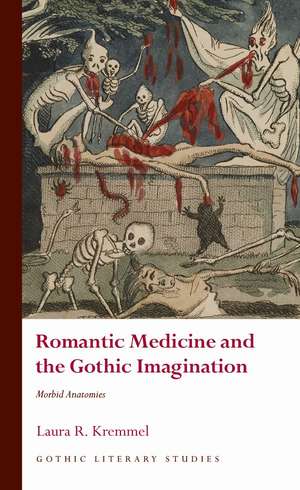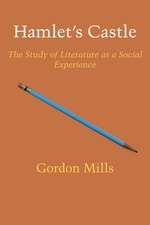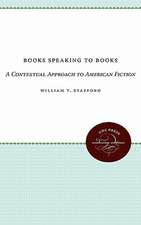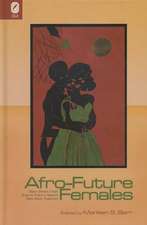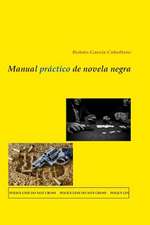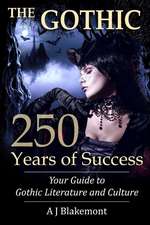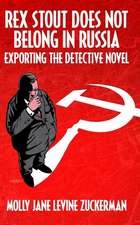Romantic Medicine and the Gothic Imagination: Morbid Anatomies: Gothic Literary Studies
Autor Laura R. Kremmelen Limba Engleză Hardback – 21 iul 2022
This book demonstrates a little-studied crossover between the Gothic imagination and the medical imagination in the Romantic period. Unafraid to explore the gore and uncertainty typical of medical experimentation, Laura R. Kremmel argues, Gothic novels, short stories, poetry, drama, and chapbooks expanded the possibilities of medical theories by showing what they might look like in a speculative space without limits. In comparing the Gothic’s collection of unsavory tropes to morbid anatomy’s collection of diseased organs, Kremmel shows that the Gothic’s prioritization of fear and gore gives it access to non-normative bodies, shifting medical and narrative agency to bodies considered powerless. Each chapter pairs a familiar gothic trope with a critical medical debate; the result is to give silenced bodies power over their own narratives.
Din seria Gothic Literary Studies
-
 Preț: 191.14 lei
Preț: 191.14 lei - 11%
 Preț: 508.60 lei
Preț: 508.60 lei - 11%
 Preț: 508.34 lei
Preț: 508.34 lei - 11%
 Preț: 508.34 lei
Preț: 508.34 lei - 23%
 Preț: 519.74 lei
Preț: 519.74 lei - 11%
 Preț: 509.27 lei
Preț: 509.27 lei - 15%
 Preț: 457.24 lei
Preț: 457.24 lei - 11%
 Preț: 543.42 lei
Preț: 543.42 lei - 23%
 Preț: 515.00 lei
Preț: 515.00 lei - 8%
 Preț: 529.50 lei
Preț: 529.50 lei - 8%
 Preț: 529.50 lei
Preț: 529.50 lei - 8%
 Preț: 529.28 lei
Preț: 529.28 lei - 8%
 Preț: 529.50 lei
Preț: 529.50 lei - 8%
 Preț: 529.81 lei
Preț: 529.81 lei - 11%
 Preț: 507.28 lei
Preț: 507.28 lei -
 Preț: 100.81 lei
Preț: 100.81 lei - 12%
 Preț: 190.72 lei
Preț: 190.72 lei - 20%
 Preț: 484.32 lei
Preț: 484.32 lei - 20%
 Preț: 517.99 lei
Preț: 517.99 lei - 16%
 Preț: 579.51 lei
Preț: 579.51 lei - 21%
 Preț: 578.97 lei
Preț: 578.97 lei - 10%
 Preț: 484.87 lei
Preț: 484.87 lei - 15%
 Preț: 484.87 lei
Preț: 484.87 lei - 10%
 Preț: 484.32 lei
Preț: 484.32 lei - 10%
 Preț: 483.86 lei
Preț: 483.86 lei - 10%
 Preț: 484.32 lei
Preț: 484.32 lei - 14%
 Preț: 837.56 lei
Preț: 837.56 lei - 15%
 Preț: 549.03 lei
Preț: 549.03 lei - 15%
 Preț: 549.03 lei
Preț: 549.03 lei - 11%
 Preț: 543.42 lei
Preț: 543.42 lei
Preț: 494.30 lei
Preț vechi: 537.29 lei
-8% Nou
Puncte Express: 741
Preț estimativ în valută:
94.59€ • 101.14$ • 78.86£
94.59€ • 101.14$ • 78.86£
Carte disponibilă
Livrare economică 28 martie-11 aprilie
Livrare express 13-19 martie pentru 29.90 lei
Preluare comenzi: 021 569.72.76
Specificații
ISBN-13: 9781786838483
ISBN-10: 1786838486
Pagini: 272
Dimensiuni: 140 x 216 x 23 mm
Greutate: 0.43 kg
Editura: University of Wales Press
Colecția University of Wales Press
Seria Gothic Literary Studies
ISBN-10: 1786838486
Pagini: 272
Dimensiuni: 140 x 216 x 23 mm
Greutate: 0.43 kg
Editura: University of Wales Press
Colecția University of Wales Press
Seria Gothic Literary Studies
Notă biografică
Laura R. Kremmel is assistant professor of English at South Dakota School of Mines & Technology.
Cuprins
Acknowledgements
Introduction: The Laboratory of the Gothic Imagination
Chapter 1: Reanimated Corpses, Blood, and the Gothic Vital Element
Chapter 2: Anaesthetic Skeletons and the Pain of Melancholy
Chapter 3: Counterfeit Corpses and Evaded Dissection
Chapter 4: The Devil and the Disability Narrative
Chapter 5: Contagious Narratives and Gothic Vaccination
Conclusion
Notes
Bibliography
Index
Introduction: The Laboratory of the Gothic Imagination
Chapter 1: Reanimated Corpses, Blood, and the Gothic Vital Element
Chapter 2: Anaesthetic Skeletons and the Pain of Melancholy
Chapter 3: Counterfeit Corpses and Evaded Dissection
Chapter 4: The Devil and the Disability Narrative
Chapter 5: Contagious Narratives and Gothic Vaccination
Conclusion
Notes
Bibliography
Index
Recenzii
"This volume is an exhilarating exploration of the shadowy hinterland that was shared by medical discourse and Gothic writing in the late-eighteenth and early-nineteenth centuries. Across five engaging and fluently written chapters, the book brilliantly reveals the extent to which some of the Gothic’s most distinctive and enduring tropes—blood, corpses, skeletons, disabled bodies—were steeped in contemporary medical thought, all the while reminding us that Romantic medicine was itself inevitably a Gothic affair. As major a contribution to Gothic Studies as it is to the fields of Romanticism and the Medical Humanities more broadly, Romantic Medicine is an extraordinary feat of critical revivification that infuses fresh life-blood into the pathological corpus of early Gothic romance, poetry and drama."
"An inventive, authoritative, and engaging inquiry into the medical background lurking behind some of the best-known—and once most-maligned—Gothic literature, Laura Kremmel’s Romantic Medicine and the Gothic Imagination reveals how the study of 'morbid anatomy' both grounds and complicates literary narratives about nonnormative, 'disobedient' bodies. This book is a necessary addition to the critical field of Romantic medicine."
"This is a gripping, important analysis of the way Gothic representation and the medical imaginary converge in the eighteenth and nineteenth centuries. Kremmel’s elegant analysis shows how Gothic functioned as a speculative force, both embracing and challenging period thinking about death and disease. Emphasizing diverse practices and agents, Kremmel demonstrates the decentralization of medical agency and authority at this period. This book enriches the fields of Romanticism, the Gothic, and medical humanities."
"In comparing the Gothic’s collection of unsavory tropes to morbid anatomy’s collection of diseased organs, Kremmel shows that the Gothic’s prioritization of fear and gore gives it access to non-normative bodies, shifting medical and narrative agency to bodies considered powerless. Each chapter pairs a familiar gothic trope with a critical medical debate; the result is to give silenced bodies power over their own narratives."
